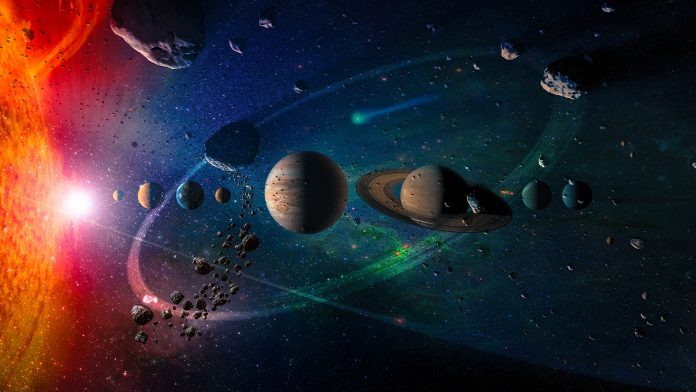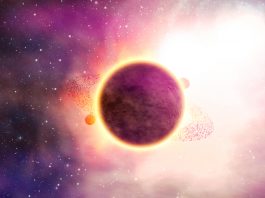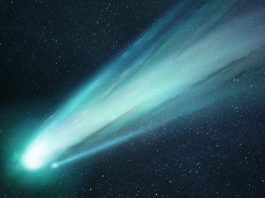A novel study has indicated that four giant planets in a planetary system will begin to pinball off each other upon the death of their Sun.
The research conducted by astronomers from the University of Warwick and the University of Exeter has signified that a planetary system of four massive planets locked in a perfect rhythm will take part in a galactic game of pinball when their Sun dies, with the planets being hurled around their solar system.
Their findings are published in the Monthly Notices of the Royal Astronomical Society.
By developing an innovative model, the researchers were able to analyse the gravitational forces in the HR 8799 system, identifying that the effects of its star becoming a white dwarf will cause its planets to break free of their orbits and bounce off each other’s gravity like a game of pinball, subsequently firing nearby debris into the dying Sun. The study will provide scientists with a more comprehensive understanding of how white dwarf’s with polluted atmospheres originally evolved.
The HR 8799 system resides 135 light-years away from Earth – containing a type A star that is between 30 to 40 million years old and four unusually massive planets – all of which are five times the mass of Jupiter and orbiting in great proximity.
The planetary system also encompasses two debris discs situated inside the orbits of the innermost planets and outside the orbits of the outermost, with the study signifying that the four planets are locked in perfect rhythm, completing double the orbit of their neighbouring planet. This means that for every orbit completed by the furthest planet, the next closest will complete two, the planet after that will complete four, and the closest will complete eight.
The scientists estimate from their investigation that this harmonious planetary system will hold strong for around three billion years, eventually being destroyed when its Sun enters the phase of becoming a red giant – where the star expands and ejects half of its mass as it becomes several hundred times its initial size – later turning into a white dwarf. The planetary system will then become extremely chaotic, with the four planets bouncing unpredictably around the solar system.
Dimitri Veras, the lead author of the study from the University of Warwick Department of Physics, said: “The planets will gravitationally scatter off of one another. In one case, the innermost planet could be ejected from the system. Or, in another case, the third planet may be ejected. Or the second and fourth planets could switch positions. Any combination is possible, just with little tweaks.
“They are so big and so close to each other that the only thing that’s keeping them in this perfect rhythm right now is the locations of their orbits. All four are connected in this chain. As soon as the star loses mass, their locations will deviate, then two of them will scatter off one another, causing a chain reaction amongst all four.”
One of the key findings of the research is that the movements demonstrated by the planets are sufficient enough to displace material from the debris discs into the atmosphere of the star, which is the type of debris that will allow the astronomers to piece together the origins of other white dwarf systems.
Veras said: “These planets move around the white dwarf at different locations and can easily kick whatever debris is still there into the white dwarf, polluting it. The HR 8799 planetary system represents a foretaste of the polluted white dwarf systems that we see today. It’s a demonstration of the value of computing the fates of planetary systems, rather than just looking at their formation.”
Professor Sasha Hinkley, the co-author of the study from the University of Exeter, added: “The HR 8799 system has been so iconic for exoplanetary science since its discovery nearly 13 years ago, and so it is fascinating to see into the future and watch it evolve from a harmonious collection of planets into a chaotic scene.”









